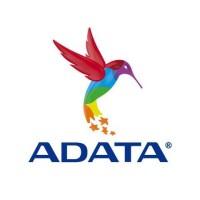
ADATA Technology Co., Ltd.
About ADATA – Innovating the Future ADATA Technology is the world's second-largest manufacturer of DRAM memory and branded solid state drives, ranking 19th among Best Taiwan Global Brands. ADATA's main product lines include memory modules, solid state drives, other consumer-grade memory products, and industrial solutions. The company has also branched into electric vehicles, AI AMR robots, and gaming with its XPG brand. ADATA’s products have garnered wide international acclaim over the years including iF Design, Red Dot Design, and Taiwan Excellence awards. ADATA has also been honored for its commitment to employee welfare and corporate social responsibility, including with “Great Place to Work Certification™” for its Taiwan, US, and Brazil offices as well as the “Best Workplaces in Asia™,” “Best Workplaces in Greater China™,” and “Best Workplaces in Taiwan™” awards. Since 2020, ADATA has been continually recognized with the “Asia Responsible Enterprise Awards” and “Best Companies to Work for in Asia” awards. The hummingbird is ADATA's brand mascot. It represents the company's agility and efficiency as well as its pursuit of innovation and commitment to creating a more colorful and intelligent lifestyle for all people. For more information, please visit www.adata.com. 關於威剛 – 引領創新,定義未來 作為全球第二大記憶體、SSD自有品牌模組廠及台灣第19大國際品牌。ADATA除記憶體外,也提供完整電競產品、工業應用解決方案、商用電動車與AI智能機器人等多元產品。秉持「不斷創新、追求卓越」信念,持續推出領先業界產品,更屢獲「台灣精品獎」及iF Design、Reddot等多項國際產品大獎肯定;發揮「以人為本、社會關懷」精神,自2020年開始,威剛連續三年獲「亞洲企業社會責任獎」及「亞洲最佳企業雇主」。此外,威剛更締造高難度「三冠王」成就,是唯一獲國際職場文化領域權威研究機構「卓越職場®」評為「亞洲最佳職場™」、「大中華區最佳職場™」、「台灣最佳職場™」的台灣品牌,威剛總公司與美國、巴西子公司皆獲「卓越職場認證™」。秉持敏捷效率的「蜂鳥精神」,未來,ADATA將持續利用創新科技為人們創造豐富多彩的智慧生活!欲瞭解詳盡訊息,歡迎造訪威剛科技官方網站www.adata.com






